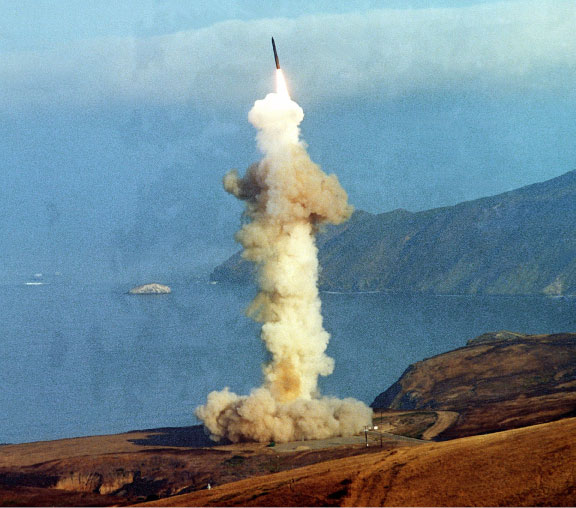WHAT IS NUCLEAR MISCALCULATION?
Nuclear miscalculation refers to the risk that a state will mistakenly understand the intentions of another state and respond by launching a nuclear strike. The false belief that an attack is imminent causes a country to “miscalculate” the risk of full-scale war and escalate a conflict to the nuclear level. Miscalculation is more likely to occur in times of heightened tension between nations.
WHAT MAKES NUCLEAR MISCALCULATION MORE LIKELY?
The less time allowed between the time a nation detects a suspected launch or act of aggression from another state and launches its own nuclear strike, the higher the risk of nuclear miscalculation. Nuclear weapons in the United States and Russia remain on “hair trigger alert”, a policy whereby launch procedures are started as soon as a nuclear launch is verified. Unfortunately, that process is prone to errors, faulty systems, and false alarms. The extremely short decision period mandated by the hair trigger alert policy and tension inherent to launching a nuclear strike make miscalculation more likely.
Communication failures also contribute to the risk of miscalculation. Closed communication channels between major nuclear powers make it exceedingly difficult to determine the intent of a launch or even to confirm that a launch has occurred. This makes it more likely a false alarm will result in a launch.
HAS MISCALCULATION HAPPENED BEFORE?
While miscalculation has never resulted in a nuclear launch, it has resulted in several extremely close calls.
In 1983, Russian satellite nuclear warning systems detected the launch of five U.S. nuclear missiles at Russia. At the time, there was no identifiable system failure. Were it not for the actions of a skeptical Lt. Colonel who independently reported the event to military leadership as a false alarm, it’s likely that a launch would have occurred.
The Cuban Missile Crisis is another example of a situation in which a nuclear launch was narrowly averted. Russia’s placement of nuclear missiles in Cuba nearly caused the U.S. to invade the country, an event that could have sparked a nuclear war.
Links to WJP Project videos that detail numerous close calls from the Cuban Missile Crisis:
